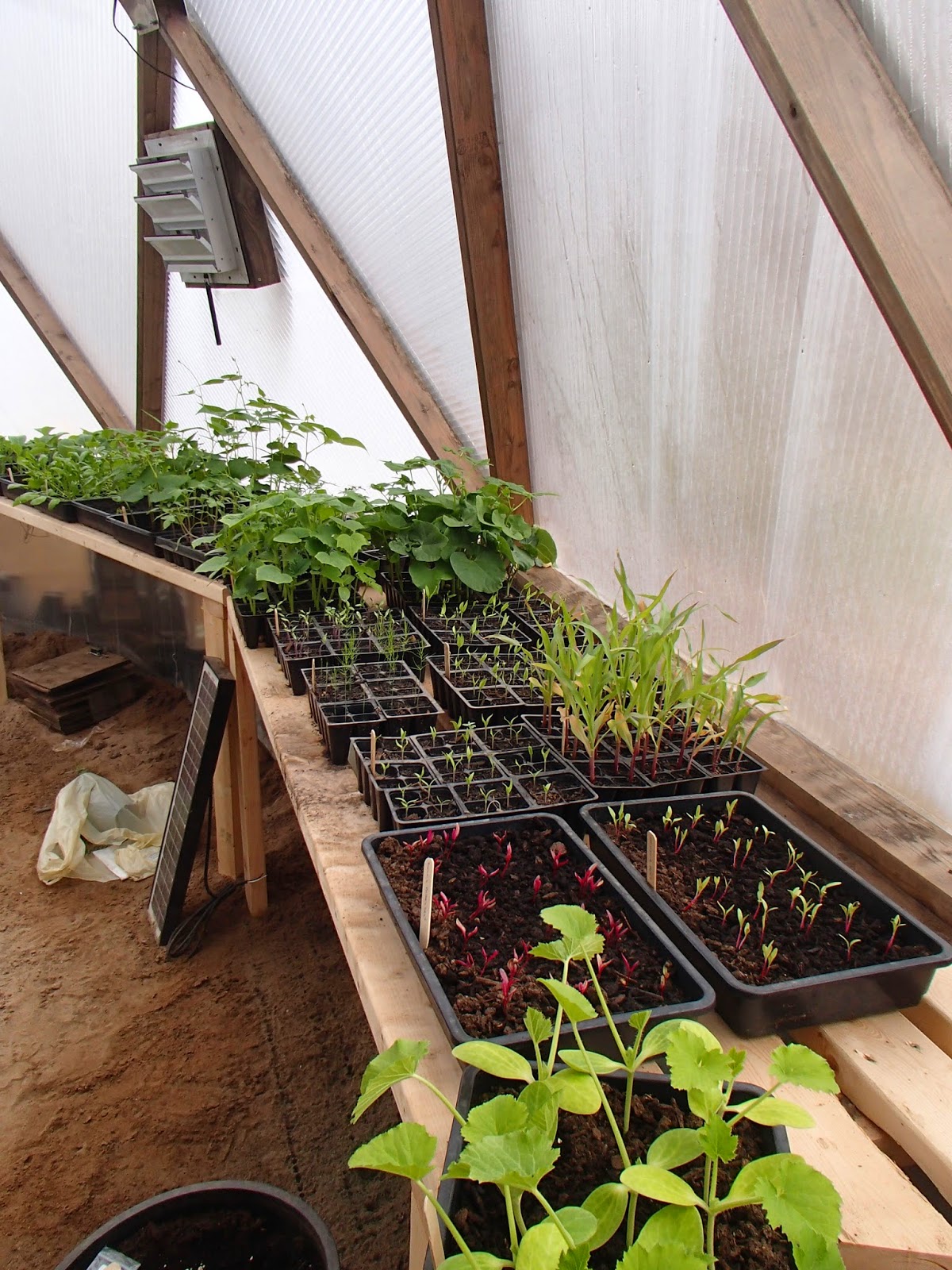Since we have not reported much on the Growing Dome recently, we thought this would be a good time to provide an update on all of the things that have been accomplished so far....and in particular our "seeding" of the dome with both plants and fish.
First, it's important to note the purpose of the dome:
1. to provide a greenhouse environment for our seedlings,
2. to provide a year long environment for growing fruits and vegetables, and
3. to establish a closed loop ecosystem using the concepts of Aquaponics.
In addressing the first point, the dome succeeded exceedingly well. Of 50 varieties of plants, all germinated successfully and many achieved the flowering stage well before expectations.
 |
| By the end of April, all of our seedlings were ready for transplant |
We've not yet had a full year of operation to demonstrate the second objective. However, our Strawberry plant and our Sage have done extremely well. The Sage has already flowered and gone into seed, while we've been munching on strawberries for a month now. The outlook is very promising as we experiment with more plants and different growing conditions (both soil and hydroponic beds).
 |
| Our Sage flowered in April in its hydroponic bed. |
For the plants, we have found that seedlings grown in soil can be readily transferred to the hydroponic beds. Some plants (like the Scarlet Runner) have rapidly developed massive root systems.
We're now experimenting with Peppers, Tomatoes and Melons.
 |
| One week into the hydroponic bed and the Scarlet Runner roots begin to grow wild |
Starting seedlings in the hydroponic beds has proven a bit more difficult. We have used rock wool pellets as the growing medium. With these, we discovered that our lettuce (Brune d'Hiver) could not develop properly. For some reason the roots could not penetrate the rock wool and the small leaves withered in the hot and humid environment of the dome.
On the other hand, Swiss Chard and Kale seem to be working out so far.
On the other side of the equation, the fish in the large water tank have proven difficult as well. Regular blog readers will know that we lost all of our Tilapia due to cold water temperatures.
We decided in the meantime to seed the tank with some of the fish from our ponds. These turned out to be 3 species: Fathead Minnows, Sunfish (or Rock Bass) fingerlings, and one we simply could not identify.
 |
| One of the Fathead Minnows we used to "seed" the water tank |
Since we know water temperatures will get quite cold in winter, we decided that a sustainable local species might be better suited to the job. We settled on the Largemouth Bass. We managed to acquire some of these fish from a fish farm close to Windsor, Ontario.
 |
| A Largemouth Bass ready to be introduced to its new home |
 |
| Peppers and Tomatoes growing in a thick "soup" of Algae |
We've discounted filtering so far because of our limitations on energy consumption. Proper filtering would require much greater water pressures than we can handle now with our small bilge pumps and solar arrays.
We may now try some Plecostomus as long as the fish are of similar size to the Bass (note: our minnows have disappeared since we introduced the Bass to the water tank).
All in all, we still feel things are progressing and we're well on our way to achieving our objectives.
We'll close this week with the foraging find of the year: Morrells. Everyone in the area should be on the look out for these superb mushrooms.
 |
| An amazing find! Delicious Morrells |
I wish I could say we found these, but we have to give full credit to Calvin who has now picked almost 2 pounds of Morells. Calvin is Chef's new help in the Tea Room kitchen and with this find, we can now call him "master forager" :)
Wow nice find with the morels! I have never found so many before. And the best part is that now you know where to look for them next year too :)
ReplyDeleteThe dome is looking great!